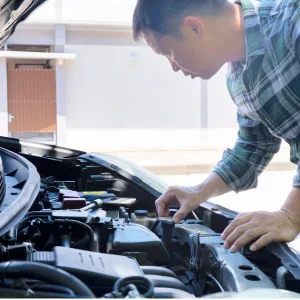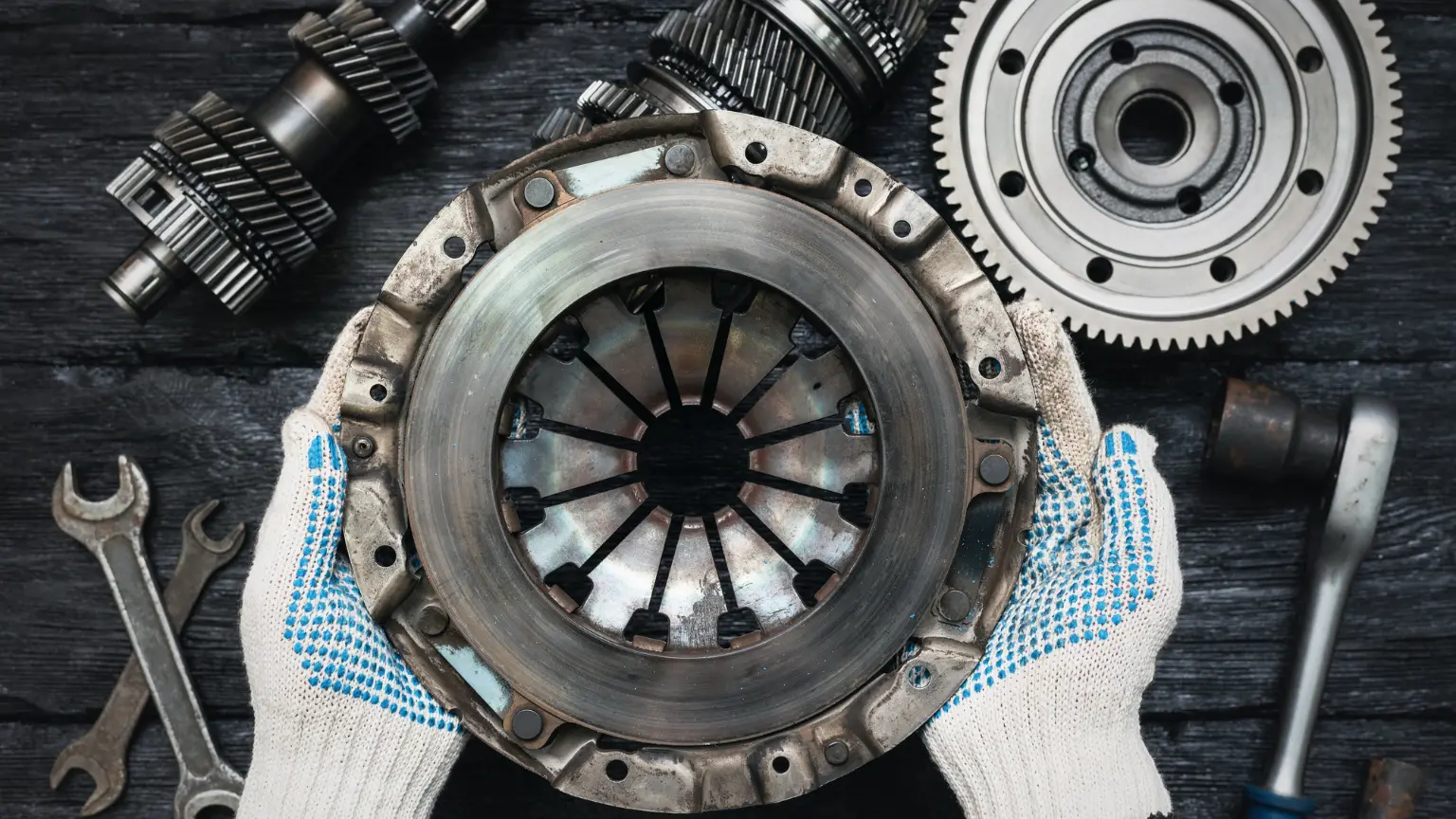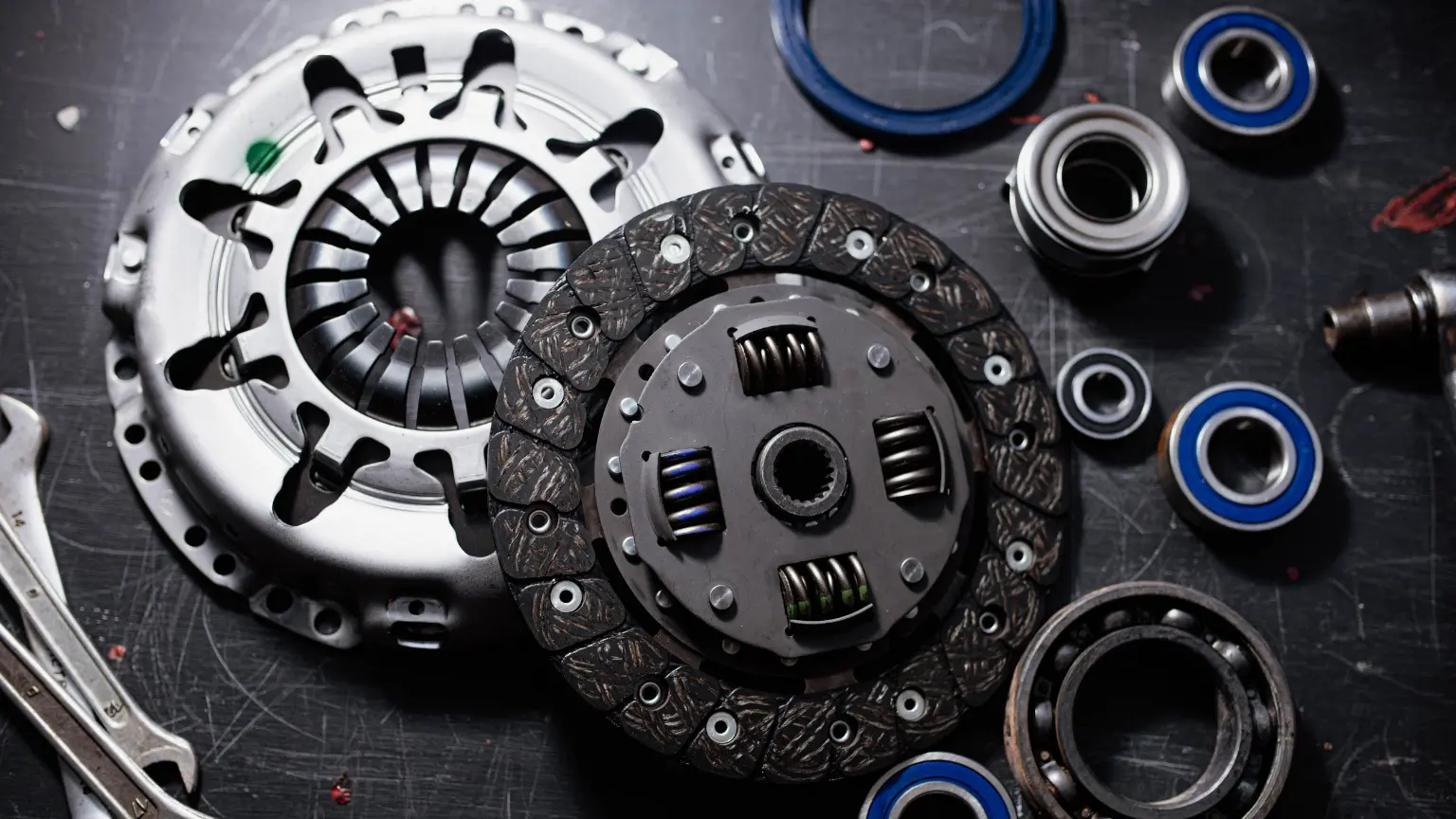Tips For Troubleshooting Transmission Issues At Home
Learn to spot common transmission troubles—noises, delayed shifts, fluid and filter issues—and follow essential maintenance, DIY repair steps, plus guidance on when to call a pro.

Transmission problems can be intimidating for many car owners, primarily because the car transmission plays a crucial role in the vehicle's performance. It's the component that allows the engine to shift gears, therefore adjusting to different speeds and terrains. However, like any other part of your car, it's prone to wear and tear. Transmission issues can range from minor glitches to significant repairs, depending on the type of transmission (manual or automatic) and the severity of the problem. Recognizing these problems early can save you a lot of time and money. This blog post introduces you to the basics of transmission problems and their impact on your vehicle's operation.
Common Symptoms of Transmission Failure
Unusual Noises
These noises can range from humming, buzzing, or whining sounds when the car is in motion. Each type of noise can indicate a different issue. For instance, a humming noise might indicate a problem with the transmission fluid, while a buzzing sound could suggest more severe gearbox issues. It's essential to pay attention to these noises as they provide the first clue that something might be wrong with your vehicle's transmission.
Delayed Shifting
Delayed shifting in vehicles, whether in manual or automatic transmissions, is a noticeable issue that affects the driving experience. In manual transmissions, drivers may experience notable hesitation or difficulty when engaging gears. This problem can manifest through the gear stick becoming unusually hard to move or a grinding noise occurring when attempting to shift. These symptoms often suggest that the clutch may not be disengaging properly, a scenario that could stem from several underlying issues.
In automatic transmissions, delayed shifting is characterized by the vehicle taking longer than expected to shift gears during acceleration or exhibiting a noticeable jerk or thump when the gear change finally occurs. This behavior is not only unsettling for the driver but can also be a sign of significant issues within the transmission system. One common cause is low transmission fluid levels, which can result from leaks or insufficient maintenance. The transmission fluid serves multiple critical functions, including lubricating moving parts, facilitating gear shifts, and cooling the transmission. When the fluid level drops, the transmission's efficiency declines, leading to delayed shifts and potential damage.
The Warning Signs
Other warning signs can indicate transmission failure, such as the check engine light turning on, a burning smell coming from under your car, or the vehicle slipping out of gear unexpectedly. These signs shouldn't be ignored. They are your car's way of telling you that something is wrong, often related to the transmission. By paying attention to these warning signs and acting promptly, you can mitigate the risks associated with major transmission issues.

Step-by-Step Troubleshooting at Home
By following a series of practical checks and tests, you can isolate common issues and determine whether professional assistance is necessary. Here are four essential steps you can perform at home to troubleshoot your vehicle’s transmission:
- Inspect Transmission Fluid Level and Condition: Begin by parking your car on a level surface and ensuring the engine is at operating temperature. Locate the transmission dipstick, remove it, wipe it clean, and reinsert it to check the fluid level. The fluid should be within the recommended range and appear bright red or pink, without a burnt smell or visible debris. Low or contaminated fluid can cause shifting problems and may indicate leaks or overdue maintenance.
- Check for Visible Fluid Leaks: Examine the area beneath your vehicle for any signs of reddish or pinkish fluid, which typically signals a transmission leak. Inspect around the transmission pan, cooler lines, and gaskets for wet spots or drips. If you find evidence of a leak, it’s important to address it promptly, as low fluid levels can lead to serious transmission damage. Regularly monitoring for leaks helps you catch issues before they escalate.
- Test for Unusual Noises and Shifting Behavior: Start the engine and listen for any humming, buzzing, or grinding noises, especially when shifting gears or while the vehicle is in neutral. During a short drive, pay close attention to how the transmission shifts—notice any delays, harshness, or slipping between gears. These symptoms can provide clues about internal transmission problems or fluid-related issues that may require further investigation.
- Scan for Diagnostic Trouble Codes (DTCs): Use an OBD-II scanner to check if the vehicle’s onboard computer has stored any transmission-related trouble codes. These codes can reveal specific issues such as solenoid failures, sensor malfunctions, or fluid pressure problems. Refer to your vehicle’s manual or an online database to interpret the codes and determine the next steps. This diagnostic check can help you pinpoint problems that may not be immediately apparent.
Early detection and action are key to maintaining your vehicle’s reliability and preventing more extensive—and expensive—transmission repairs down the road.
Preventative Maintenance Tips
Preventing transmission problems begins with a proactive approach to maintenance, and adopting a few consistent habits can significantly impact the longevity and performance of your vehicle’s transmission.
The Role of the Transmission Filter
The transmission filter is another vital component in maintaining a healthy transmission. It helps to sift out any debris, dust, and metal shavings that might circulate within the transmission fluid, preventing these particles from causing internal damage. Neglecting the filter can lead to a build-up of contaminants, resulting in poor performance and potentially significant transmission issues. Regular checks and replacements of the transmission filter, as recommended by your vehicle's manufacturer, are crucial steps in preventive car transmission maintenance.
Transmission Fluid Types
Not all transmission fluids are created equal, and using the wrong type can lead to significant transmission problems. Each fluid is formulated with a unique blend of viscosity characteristics and additives, tailored to meet the operational demands of different transmission types and designs. These variations in fluid properties are not arbitrary; they are critical to the transmission's functionality, efficiency, and longevity. The additives in automatic transmission fluid (ATF) may include detergents, anti-wear agents, rust inhibitors, and friction modifiers. These components work together to prevent the buildup of sludge and varnish, protect against thermal breakdown, and ensure smooth gear shifting.
The choice between different types of manual transmission fluids (e.g., conventional, synthetic) can significantly affect the transmission's performance, especially under extreme conditions or high-performance demands. Using the wrong type of transmission fluid can lead to a range of transmission problems.
DIY Transmission Repair
Tools and Materials
The right set of tools and materials makes the job easier and ensures that the repair work is done safely and effectively. Here's an expanded list of essentials you'll need to tackle home transmission maintenance and simple repairs:
- Set of wrenches (including a torque wrench): A comprehensive set of wrenches is indispensable for any automotive repair job. Including a torque wrench in your toolkit is crucial for tightening bolts and nuts to the precise specifications required by your vehicle's manufacturer. This ensures all parts are securely fastened and function correctly without being over- or under-tightened, which could lead to damage.
- Screwdrivers (flathead and Phillips): Various screwdrivers are required to remove and secure different transmission system components. Flathead and Phillips screwdrivers cover most screw types found in vehicles. Ensuring you have a range of sizes will help prevent stripping screws or damaging the component you're working on.
- Hydraulic jack and jack stands: Lifting your vehicle safely is the first step in many repair jobs, particularly for transmission work. A reliable hydraulic jack, along with sturdy jack stands, is necessary to elevate and securely support your vehicle while you work underneath it.
- Drain pan for old fluid: When changing transmission fluid, a drain pan is essential to catch the old fluid as it's drained out. This prevents spills and facilitates the proper disposal of the old fluid, which is crucial for environmental safety.
- Transmission fluid funnel: A funnel specifically designed for transmission fluid helps prevent spills and ensures the fluid is directed into the small fill hole. This tool is essential for a clean and efficient fluid change process.
- Gloves and safety glasses: Personal protective equipment, such as gloves and safety glasses, is essential to protect yourself from chemicals and any flying debris while working on your vehicle. Safety should always be a priority.
- Clean rags for cleanup: A supply of clean rags is necessary for wiping up spills, cleaning parts, and generally keeping your work area tidy. This helps prevent any slips or accidents and maintains a clean environment.
- Vehicle repair manual or access to a reliable online guide: Having a detailed repair manual or online manual transmission troubleshooting guide specific to your vehicle's make and model is invaluable. It provides step-by-step instructions and specifications for your vehicle's transmission maintenance and repair, ensuring you follow the correct procedures.
Completing home transmission maintenance and repairs can be a rewarding experience, giving you a sense of accomplishment. However, it's important to go into any repair job well-prepared and informed. Using the correct tools and materials, along with a comprehensive guide, will help ensure that the work is done safely and effectively.
Navigating Automatic Gearbox Problems
When facing automatic gearbox common problems, start with the basics: verify the level and condition of the transmission fluid, as it's crucial for the gearbox's operation. If the fluid is burnt or contains debris, a flush and replacement might be necessary. For vehicles experiencing erratic shifting or slipping gears, the issue could be with the transmission's solenoids or torque converter. Solenoids can sometimes be replaced individually, but torque converter problems often require professional intervention. Additionally, updating the transmission's software can solve issues related to shifting patterns in some modern vehicles, highlighting the importance of auto transmission diagnostics.

Clutch Repair Basics
Begin by diagnosing the problem: a slipping clutch might simply need adjustment, while a clutch that won't engage could indicate a more serious issue like a worn disc or damaged pressure plate. To replace the clutch, you'll need to remove the transmission from the vehicle, which involves supporting the engine, disconnecting the driveshaft, and carefully lowering the transmission. Once accessed, inspect the clutch disc, pressure plate, and flywheel for wear. Replace these components as needed, always ensuring to follow the manufacturer's specifications for torque when reassembling.
Deciphering Error Codes
Each code corresponds to a specific issue within the transmission system, from fluid pressure faults to communication errors between the transmission control module and the engine control unit. Deciphering these codes often requires access to a detailed manual or online database that explains each code’s meaning and the recommended steps for resolution. By accurately interpreting these codes, DIYers can gain insights into complex problems that might not be evident through physical inspection alone.
DIY Solutions and When to Seek Help
For many car owners, dealing with transmission issues can be intimidating, but not all problems require immediate professional intervention. Several minor transmission issues can be addressed at home with basic tools, a bit of patience, and a methodical approach.
When to Consider a Professional Transmission Mechanic
Deciding when to tackle car repairs yourself and when to hand things over to a professional is crucial, especially with something as complex and vital as your vehicle's transmission. While some maintenance and minor repairs can be managed at home, certain scenarios call for the expertise and equipment of a professional transmission mechanic. Below are detailed instances where consulting a professional is the wisest course of action:
- Complex Electronic Issues: Modern vehicles integrate complex electronic systems within their car transmissions, making diagnostics and repairs challenging without the right tools and expertise. These systems often require proprietary diagnostic software that is only available to professional mechanics. They can accurately diagnose electronic issues using specialized tools, ensuring the right repairs are made to safeguard your vehicle's transmission and overall performance.
- Internal Mechanical Damage: When there's suspected damage to internal mechanical components, such as gears or the torque converter, it's crucial to seek professional help. These components are integral to the transmission's operation, and damage can lead to significant vehicle malfunctions. Professionals have the experience to diagnose such issues accurately and the equipment to repair or replace damaged parts efficiently, minimizing the risk of further damage.
- Recurring Problems: If you find yourself facing the same transmission issue even after multiple attempts at home repair, it might be a sign of a deeper, less apparent problem. Recurring issues often indicate underlying problems that are not obvious to the untrained eye. A professional transmission mechanic can offer a comprehensive assessment and address the root cause of the problem, preventing further damage and potentially costly repairs in the future.
- Transmission Rebuilds or Overhauls: These are among the most intensive types of transmission repairs, requiring the disassembly of the entire transmission. Such tasks demand a clean, well-equipped transmission repair shop, along with a detailed understanding of the transmission's components and their interactions. They have the necessary environment, tools, and expertise to carry out these complex repairs or rebuilds, ensuring the transmission is reassembled correctly and functions as intended.
Professionals can identify and address issues efficiently, using their training and specialized tools to ensure the longevity and reliability of your vehicle's transmission. Before embarking on any significant repair or facing a problem that seems out of your depth, consulting with a professional can provide peace of mind and prevent further damage to your vehicle.
How a Professional Diagnosis Can Save You Money
Contrary to the common assumption that DIY repairs always save money, in some cases, consulting a professional from the start can be more cost-effective. Professionals can quickly identify the root cause of a problem, avoiding the trial-and-error approach that can sometimes characterize DIY efforts. Their ability to pinpoint issues accurately means that only necessary repairs are made, potentially saving hundreds or even thousands of dollars in unnecessary parts or misguided fixes.
Preventive Maintenance and Long-term Care
The Impact of Driving Habits
Driving habits significantly influence the health and longevity of your car's transmission. Practices such as aggressive acceleration, towing heavy loads without proper preparation, or shifting gears while the vehicle is moving can strain the transmission unnecessarily. By adopting a more mindful driving style, you can reduce wear and tear on the transmission, therefore extending its lifespan. This includes using the appropriate gear for driving conditions, allowing the car to come to a complete stop before shifting from reverse to drive, and avoiding excessive idling with the vehicle in gear.

Seasonal Transmission Care Tips
The changing seasons can impact your vehicle’s transmission in various ways, making seasonal maintenance an essential aspect of care. For instance, during winter, allowing your car to warm up before driving can help the transmission fluid reach its optimal operating temperature, ensuring smoother gear shifts. In contrast, summer's heat necessitates checking the transmission fluid more frequently, as higher temperatures can degrade the fluid’s quality faster. Adjusting your maintenance routine to account for seasonal variations can help prevent transmission issues related to temperature extremes.
The journey through understanding, diagnosing, and either addressing car transmission issues yourself or opting for professional assistance is immensely empowering. It equips you with the knowledge to make informed decisions about your vehicle's maintenance and repairs. This education not only enhances your ability to perform DIY transmission repair where feasible but also ensures that you're better prepared to discuss and understand recommendations from transmission mechanics. Ultimately, the knowledge and skills you acquire empower you to take proactive steps toward maintaining your vehicle's health, potentially saving you significant time and resources in the long run.
Follow a maintenance program
Ante gravida id aenean quis egestas risus nam amet nullam leo diam diam aliquam eu eu malesuada arcu rhoncus suspendisse nulla mattis ut amet sagittis in justo egestas.

search for a trusted mechanic
Lorem ipsum dolor sit amet, consectetur adipiscing elit lobortis arcu enim urna adipiscing praesent velit viverra sit semper lorem eu cursus vel hendrerit elementum morbi curabitur etiam nibh justo, lorem aliquet donec sed sit mi dignissim at ante massa mattis.
- Neque sodales ut etiam sit amet nisl purus non tellus orci ac auctor
- Adipiscing elit ut aliquam purus sit amet viverra suspendisse potent
- Mauris commodo quis imperdiet massa tincidunt nunc pulvinar
- Excepteur sint occaecat cupidatat non proident sunt in culpa qui officia
Check the air pressure in your tires
Vitae congue eu consequat ac felis placerat vestibulum lectus mauris ultrices cursus sit amet dictum sit amet justo donec enim diam porttitor lacus luctus accumsan tortor posuere praesent tristique magna sit amet purus gravida quis blandit turpis.
Review your suspension frequently
At risus viverra adipiscing at in tellus integer feugiat nisl pretium fusce id velit ut tortor sagittis orci a scelerisque purus semper eget at lectus urna duis convallis. porta nibh venenatis cras sed felis eget neque laoreet suspendisse interdum consectetur libero id faucibus nisl donec pretium vulputate sapien nec sagittis aliquam nunc lobortis mattis aliquam faucibus purus in.
- Neque sodales ut etiam sit amet nisl purus non tellus orci ac auctor
- Adipiscing elit ut aliquam purus sit amet viverra suspendisse potent
- Mauris commodo quis imperdiet massa tincidunt nunc pulvinar
- Excepteur sint occaecat cupidatat non proident sunt in culpa qui officia
Service your vehicle as regularly as posible
At risus viverra adipiscing at in tellus integer feugiat nisl pretium fusce id velit ut tortor sagittis orci a scelerisque purus semper eget at lectus urna duis convallis. porta nibh venenatis cras sed felis eget neque laoreet suspendisse interdum consectetur libero id faucibus nisl donec pretium vulputate sapien nec sagittis aliquam nunc lobortis mattis aliquam faucibus purus in.
“Nisi quis eleifend quam adipiscing vitae aliquet bibendum enim facilisis gravida neque velit euismod in pellentesque”
Conclusion
Eget lorem dolor sed viverra ipsum nunc aliquet bibendum felis donec et odio pellentesque diam volutpat commodo sed egestas aliquam sem fringilla ut morbi tincidunt augue interdum velit euismod eu tincidunt tortor aliquam nulla facilisi aenean sed adipiscing diam donec adipiscing ut lectus arcu bibendum at varius vel pharetra nibh venenatis cras sed felis eget.


